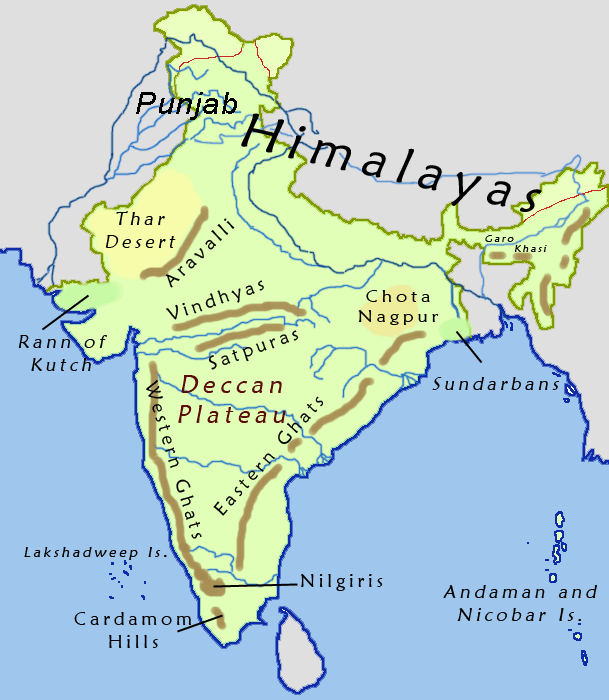|
Dai River (India)
River Dai originates in the southeastern slopes of the Aravalli Range in Rajgarh village, near Nasirabad Tehsil of Ajmer District. It flows southeast for about 40 km and east for about 56 km in Ajmer District and for a short reach through Tonk District, before joining Banas River The Banas is a river which lies entirely within the state of Rajasthan in western India. It is a tributary of the Chambal River, itself a tributary of the Yamuna, which in turn merges into the Ganga. The Banas is approximately 512 kilometres in ... near Bisalpur village in Tonk District. Ajmer district Chambal River Rivers of Rajasthan Tonk district {{India-river-stub ... [...More Info...] [...Related Items...] OR: [Wikipedia] [Google] [Baidu] |
Aravalli Range
The Aravalli Range (also spelled ''Aravali'') is a mountain range in Northern-Western India, running approximately in a south-west direction, starting near Delhi, passing through southern Haryana, Rajasthan, and ending in Ahmedabad Gujarat. The highest peak is Guru Shikhar on Mount Abu at . The Aravalli Range is arguably the oldest geological feature on Earth, having its origin in the Proterozoic era. The Aravalli Range is rich in natural resources and serves as check to the growth of the western desert. Etymology Aravalli, a composite Sanskrit word from the roots ''"ara"'' and ''"vali"'', literally means the ''"line of peaks"''. Natural history Geology The Aravalli Range, an eroded stub of ancient mountains, is believed to be the oldest range of fold mountains in India.Roy, A. B. (1990). Evolution of the Precambrian crust of the Aravalli Range. Developments in Precambrian Geology, 8, 327–347. The natural history of the Aravalli Range dates back to times when ... [...More Info...] [...Related Items...] OR: [Wikipedia] [Google] [Baidu] |
Tonk District
Tonk district is a district of the state of Rajasthan in western India. The city of Tonk is the administrative headquarters of the district. The district is bounded on the north by Jaipur district, on the east by Sawai Madhopur district, on the southeast by Kota district, on the south by Bundi district, on the southwest by Bhilwara district, and on the west by Ajmer district. Geography Tonk is on National Highway 12, 100 km from Jaipur. It is in the northeastern part of the state between 75.19' and 76.16 East longitude and 25.41' and 26.24' North latitude. The total area is 7194 km2 (as per 2002-03). It is one of the four districts headquarters of Rajasthan state that are not directly connected with rail. The nearest railway station, Newai, is within the district but is 30 km from the district headquarters. Banas River flows through the district. The district is notable for the Tonk meteorite, a rare carbonaceous chondrite meteorite that fell in 1911. Economy ... [...More Info...] [...Related Items...] OR: [Wikipedia] [Google] [Baidu] |
Banas River
The Banas is a river which lies entirely within the state of Rajasthan in western India. It is a tributary of the Chambal River, itself a tributary of the Yamuna, which in turn merges into the Ganga. The Banas is approximately 512 kilometres in length. The name "Banaas" literally translates as "forest-hope" (Ban-aas) meaning "Hope-of-the-forest" or 'Van Ki Aasha.' The river originates in the Veron ka Math situated in Khamnor Hills of the Aravalli Range, about 5 km from Kumbhalgarh in Rajsamand district. It flows northeast through the Mewar region of Rajasthan, then across Hadavati before meeting the Chambal near the village of Rameshwar in Sawai Madhopur District. The Banas drains a basin of 45,833 km2, and lies entirely within Rajasthan. It drains the east slope of the central portion of the Aravalli Range, and the basin includes all or part of Ajmer, Bhilwara, Bundi, Chittorgarh, Dausa, Jaipur, Pali, Rajsamand, Sawai Madhopur, Sirohi, Tonk, and Udaipur districts. T ... [...More Info...] [...Related Items...] OR: [Wikipedia] [Google] [Baidu] |
Chambal River
The Chambal River is a tributary of the Yamuna River in Central and Northern India, and thus forms part of the greater Gangetic drainage system. The river flows north-northeast through Madhya Pradesh, running for a time through Rajasthan then forming the boundary between Rajasthan and Madhya Pradesh before turning southeast to join the Yamuna in Uttar Pradesh state. It is a legendary river and finds mention in ancient scriptures. The perennial Chambal originates at Janapav, south of Mhow town, near Manpur, Indore, on the south slope of the Vindhya Range in Madhya Pradesh. The Chambal and its tributaries drain the Malwa region of northwestern Madhya Pradesh, while its tributary, the Banas, which rises in the Aravalli Range, drains southeastern Rajasthan. It ends a confluence of five rivers, including the Chambal, Kwari, Yamuna, Sind, Pahuj, at Pachnada near Bhareh in Uttar Pradesh state, at the border of Bhind and Etawah districts. The Chambal River is considered pollution ... [...More Info...] [...Related Items...] OR: [Wikipedia] [Google] [Baidu] |
Rivers Of Rajasthan
A river is a natural flowing watercourse, usually freshwater, flowing towards an ocean, sea, lake or another river. In some cases, a river flows into the ground and becomes dry at the end of its course without reaching another body of water. Small rivers can be referred to using names such as creek, brook, rivulet, and rill. There are no official definitions for the generic term river as applied to geographic features, although in some countries or communities a stream is defined by its size. Many names for small rivers are specific to geographic location; examples are "run" in some parts of the United States, "burn" in Scotland and northeast England, and "beck" in northern England. Sometimes a river is defined as being larger than a creek, but not always: the language is vague. Rivers are part of the water cycle. Water generally collects in a river from precipitation through a drainage basin from surface runoff and other sources such as groundwater recharge, springs, a ... [...More Info...] [...Related Items...] OR: [Wikipedia] [Google] [Baidu] |


